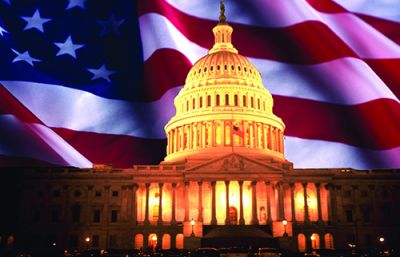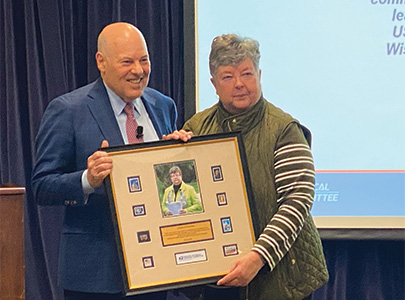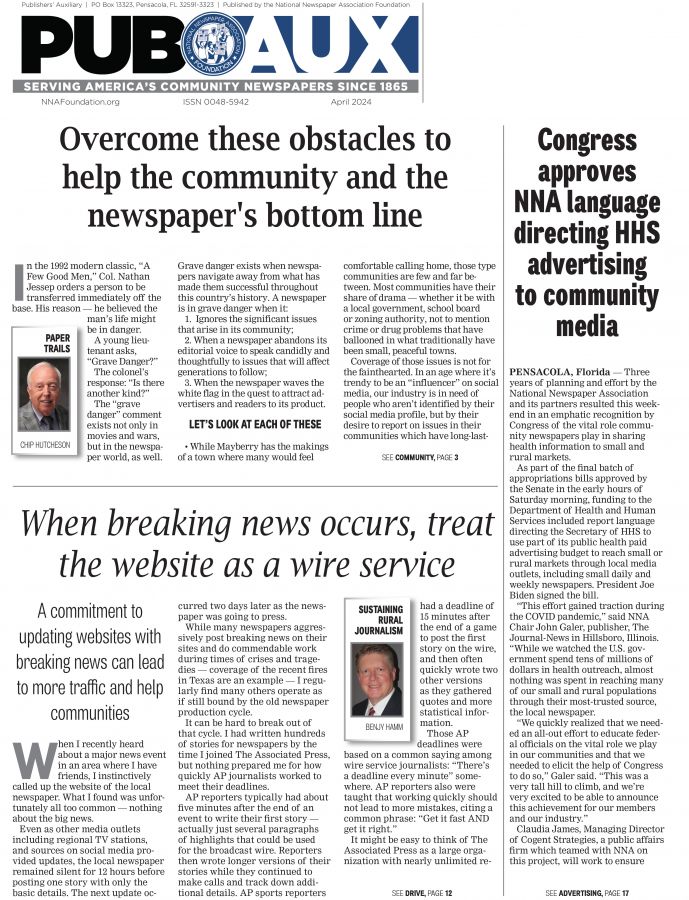Panel: Police training could improve media relations
Nov 3, 2014
Journalists arrested, tear-gassed, shot at with rubber bullets, manhandled and restricted from areas in Ferguson, MO: It seemed as though the local authorities were at war with the media as much as they were with those who were rioting in the streets.
Free speech and the right to cover the news brought into focus
during meeting
By Stanley Schwartz
Managing Editor | Publishers’ Auxiliary
COLUMBIA, MO—Journalists arrested, tear-gassed, shot at with rubber bullets, manhandled and restricted from areas in Ferguson, MO: It seemed as though the local authorities were at war with the media as much as they were with those who were rioting in the streets.
Ferguson, a suburb of St. Louis, was the scene of great unrest in August and September after a police officer shot and killed Michael Brown, a young black man who was unarmed. What started as a peaceful protest of that shooting grew quickly into a riot, with local businesses looted and burned. The shooting and aftermath has sparked two federal investigations and a grand jury investigation.
Journalists found themselves being pushed along with the crowds or corralled into a “media area,” away from where the actual news was taking place. Information on what was happening out in the streets was not forthcoming from the authorities. At least 44 news organizations including the National Newspaper Association have urged the Justice Department to look into the interactions that occurred between the police and the media.
During the Missouri Press Association’s annual convention, a panel was convened to discuss what lessons could be learned from what happened on the streets of Ferguson.
Panel moderator Paul Stevens, the former Kansas City bureau chief for The Associated Press, said the story “resonated around the country and the world, calling into issues, such as freedom of the press, freedom of assembly, freedom of information, the rights of property owners, and law enforcement’s duty to maintain order.”
Stevens said a poll of St. Louis County residents showed that a majority of them, 76 percent, thought the media was partially to blame for making things worse in Ferguson. Even the fairness of the reporting was called into question.
The panel consisted of five journalists who were directly affected by what went on in Ferguson and Missouri State Highway Patrol Superintendent Col. Ron Replogle. A highway patrol captain was put in charge of the police because of the escalating violence in the community.
Lawrence Bryant, a photographer for the St. Louis American, a paper that focuses on black issues in the city, said he was originally scheduled to cover a concert, something he normally does for the paper.
It was a much different situation than he has ever faced before, he said about heading out onto the streets of Ferguson: “I went from concerts to teargas.”
David Carson, a photographer for the St. Louis Post-Dispatch, said he was on his day off when he started getting tweets about the situation in Ferguson. It wasn’t long before he was pulled in to help with the coverage.
John Eligon, the New York Times’ Kansas City correspondent, said he had been on vacation when the story first started, and he came on the scene about a week later, the night the curfew started.
Eligon said he faced the dual problem of trying to blend in with the crowds to get better access to what was going on, while at the same time not running afoul of the police. He asked whether a lot of the confrontations could have been prevented if more information was forthcoming by the police in the early stages of the events that were unfolding. But he did note that police might not have been able to divulge certain information until after an investigation was completed.
Eligon has covered courts and noted that sometimes police-involved shootings are more sensitive and investigations could take longer.
Replogle said that in his 31 years in law enforcement he had never experienced anything like what went on in Ferguson.
“I think there are lessons to be learned,” he said, “certainly from law enforcement, and I would hope from the media side, too.”
After Missouri Gov. Jay Nixon put the Highway Patrol in charge, Replogle conducted a daily media briefing, which he said was an important component to maintaining open lines of communication between the police and the media.
He was also concerned with how social media affected the events.
The Fog of War
Replogle noted that the first information out of a situation is not always accurate, and that can be attributed to the Fog of War. He said both sides—media and law enforcement—need to work harder to put out accurate information.
Jim Salter, the St. Louis AP correspondent, said he went early to Ferguson to cover the vigil for Brown when things were still quiet. He noted that about 4,000 people had gathered peacefully to mourn the teen’s death.
“There were prayers, people holding hands, people crying; you could sense it was a peaceful event,” he said. Salter read a bit of what he wrote that day: “A few thousand people crammed the street where Michael Brown was shot for a candlelight vigil Sunday night. The vigil was emotional but peaceful.”
He noted that he was on the phone about to dictate the story to AP’s Chicago office when a woman came running up the street saying people were rioting over on West Florissant. Having faced false alarms before, Salter decided to check it out for himself. He saw a large crowd converging on a QuickTrip; the same store where he had been 20 minutes before getting paper so he could write out his notes. That store became the focal point for the early stages of the looting.
Kenya Vaughn, a reporter and website editor for the St. Louis American, said she had been casually scrolling through Instagram when she saw a man holding a sign that said “The Ferguson Police Department just executed my son.”
Originally, she thought it might be a joke or a prank, but soon realized that this was unfolding in the town right next to community where she grew up. In fact, the QuickTrip was where she used to fill up weekly.
“The whole incident took place less than 10 blocks from my house,” she said. Vaughn arrived on a chaotic scene, where police had blocked off the street. “I knew that this was going be like nothing we had experienced.”
She had to leave to cover the Bill Cosby comedy show, knowing with a sinking feeling that what was happening in Ferguson was not going to end well.
She said the St. Louis American, an African-American paper, had to tell an accurate story that was also sensitive to the situation.
“It’s a story that has happened in our municipalities that we’ve talked about for years and years. … So when push came to shove we knew the community would not be silent.
“We went from being a weekly news publication with a daily website and a nice social media presence to being a real-time news organization, where everybody had Ferguson as their beat—from the executive assistant to the entertainment reporters.”
One of the audience members worried about what if the worst happens—that if the white police officer was not charged in the shooting or after—if he was acquitted—would the town erupt into further violence?
Bryant said he thought what had transpired in Ferguson up to that point was just the first act, and what they were experiencing then was the intermission. The next act would come after the grand jury finished its investigation.
“Everyone is on edge,” he added, and it could expand beyond St. Louis next time.
“From the law enforcement perspective,” said Replogle, “we’re certainly planning for the worst, but praying for the best.”
He noted that the police had gone back into the community with varying programs, such as the child ID program, trying to reach out to the people there.
“This could happen anywhere in the country,” he added. “It certainly shows us the kind of relationships we have in our society.” He noted that law enforcement had learned from the events in Ferguson.
Eligon said that from the interviews he did of some of the young men who were involved in the looting that the country would not have cared about what had happened there if they didn’t start looting.
“When things calm down, where does all the media go?” he said. “They just kind of disappear.”
As for the coverage, he was not sure if the media would handle things differently if the violence escalated again. But he did note that he had experienced riot fatigue—where every night reporters would end up writing the same type of article.
Carson, agreed saying, he heard that if the QuickTrip had not burned, the national media would not have shown up in Ferguson.
Salter said he thought there is the potential for escalating protests, but after speaking to the governor, he learned there had been significant progress in calming the situation.
Vaughn thought there were some positive things that have come out of the confrontations, such as the way the Highway Patrol was interacting with the community. From one day when she saw people with rage in their eyes to the next when people were acting like it was a block party; the mood changed that fast.
She said she believes keeping the situation calm will come down to interacting with the protesters rather than trying to contain them.
There were also concerns that the events escalated because of the police response to the protesters. Some thought the militarization of the police caused the protesters to act more aggressively. Replogle said that is one of the reasons they pulled the tactical units back, but he did not want to send his troopers into a situation without protective gear that could prevent their death or injury. He noted that sometimes officers have to respond with great restraint when dealing with unruly crowds or individuals.
Carson said he thought the police were in a no-win situation in Ferguson. He heard hundreds of gunshots while covering the story, with the police responding with less than lethal force.
Only one person died during the “civil unrest” said Replogle, and that was not by police.
Carson noted that there were certain elements in the crowds that wanted confrontations.
“They would do something and then the police would have to respond … and it would ratchet up during the night. The media would put on body armor because we could see what was coming.”
Lessons Learned
Given that this type of confrontation could happen again, one audience member asked the panel what they learned from their coverage, because some incidents happened because their cameras were present.
Carson acknowledged that protesters have become more media savvy; they know when the cameras are out there. Protesters challenged him to tell the story from their point of view as did the police tactical teams.
He said he couldn’t promise them that: “As a photojournalist, I am going to report what I see and I will back up what I see with a picture.” He did see some stagecraft, where protesters would “perform” for the TV cameras.
Salter said journalists also have to deal with the proliferation of non-mainstream media—citizen journalists. Those journalists with press passes were lumped together with the citizen journalists by the protesters. Some of them, he noted, have their own agendas, while mainstream journalists have to fight to remain unbiased in their coverage.
Carson said there were people who claimed they were journalists who clearly were trying to antagonize the situation. “And they would pollute the water we’re all in and, give a bad impression of the media and all journalists.”
He was in favor of some kind of credentialing for the media.
Replogle said it helps if the police can tell the difference between the media and the protesters.














